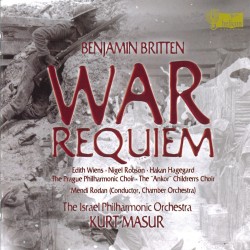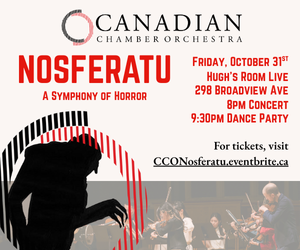 Britten - War Requiem
Britten - War Requiem
Edith Wiens; Nigel Robson; Håkan Hagegård; Prague Philharmonic Choir; Ankor Children’s Choir; Israel Philharmonic Orchestra; Kurt Masur
Heilicon Classics 02-9645
Ominous sounds issuing from the lower depths of the strings with the insistent tolling of bells and the tenor‘s desperate question “what passing bells for those who die as cattle?” – so begins the pacifist Benjamin Britten’s mass for the dead, a passionate antiwar statement written in 1962 for the opening of the newly rebuilt Coventry Cathedral. The ingenious idea to combine the Latin text, the basic underpinning structure of the mass, with poems of dark, terrifying imagery of the war in the trenches is what distinguishes Britten’s work from other requiems of the past. The poems of Wilfred Owen, an English foot soldier who was killed a week before the fighting ended in 1918 are what give this piece its unforgettable poignancy and impact.
Nothing but praise can be given to this spectacular new recording produced in Israel whose people have suffered and continue to suffer from the ravages of war. In the tradition begun by the composer himself, Kurt Masur, a former director of the Leipziger Gewandhaus, commands the massive ensemble of forces (full symphony orchestra, chamber orchestra, several choruses and three soloists) with precision, clear insight and passionate understanding. The deafening sounds of war in the “Dies Irae” section, martial trumpets and horns with rumbling bass drums emulating the roar of cannons and snare drums imitating the rattle of machine gun fire, sound frighteningly real.
But the soul of the piece is in the singing. The Latin text is carried by the mixed choruses and the boys’ choir as well as the female soloist, Canadian soprano of international repute Edith Wiens. Her wailing lament, for example in the “Lacrimosa” is heartbreaking. In stark contrast, Owen’s verses in the declamatory style of the English language are sung by the tenor Nigel Robson and baritone Håkan Hagegård. Their precise diction, annunciation of remarkable clarity and emotional involvement rival that legendary first recording by Peter Pears and Dietrich Fischer-Dieskau of 1963, under the composer’s baton.



